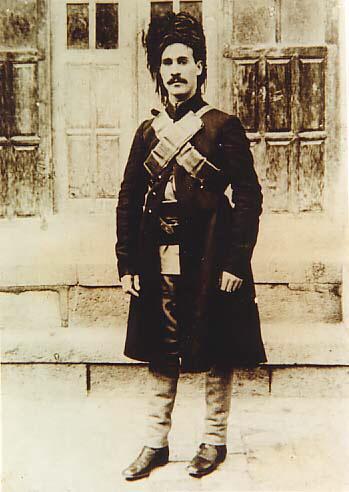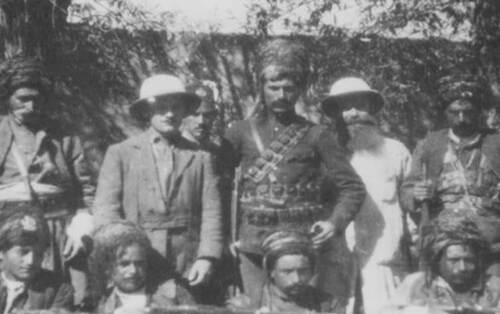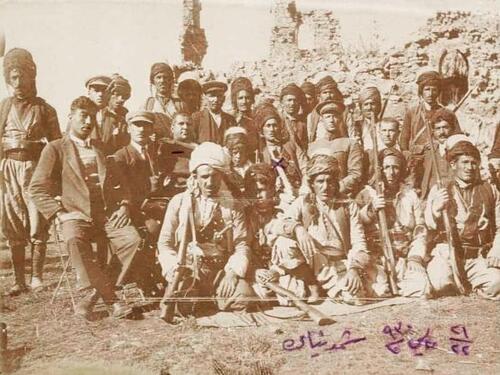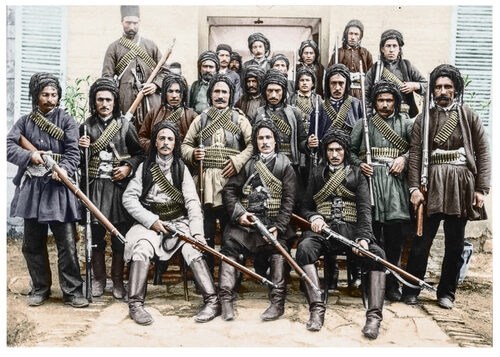World War I, not only made great changes throughout the Western world and made two blocks of power countering one another, but it also caused many changes in the Middle East and led to the interference of "England", "France" and "Unite States" in this region's countries. On the other hand, the various nations of the vast geography of the Middle East built up their own military forces to establish their national states and at the same time, their politicians began to construct strong relationships with the authorities of the superpowers at that time. During that time, the Kurds from all four parts of Kurdistan also attempted to achieve their national aims. They even made an effort to end their colonization and create their independence from all the regional powers that had violated their rights for hundreds of years.
One of those characters who left a significant trace in Kurdish national movements, particularly in the East part of Kurdistan was "Smail Agha Shikak" known as "Simko". Smail Agha known as "Sardar Nosrat", was the son of "Mohammad Agha" and the grandson of "Ali Khan Shikak". Their clan is one the greatest clans among Kurds and the west of Iran. They had a major role in the changes that occurred in the west of Urmia Lake. Many analysts like "Martin Van Bruinson" have especially analyzed the impact of this clan during World War I. This analysis and the interviews with the old politicians and activists of that region have provided useful information.

During World War I and a few years after it, the most famous figure on the border of Iran and the Ottoman Empire was Smail Agha, the leader of the Shikak clan. During the first fifty years of the twentieth century, he took the opportunity of gaining equal capabilities as of the Ottomans, Russians, Iranians, and the English who were in relationships with all the other parties and he developed his power over the region. After World War I he acted like an independent ruler and he cooperated with a group of national Kurdish leaders which led to many problems for the central government. When Iran's army claimed to have ended up the issues he had made for them in August 1922, he left Iran's land and remained in the central parts of Kurdistan as an influential leader. Both the Ottomans and the English tried to reach out for his help in order to eliminate their problems in Mosul and use his power and charisma among the Kurds.
Simko's life path was not distinct from a Kurdish clan leader's way of life. Most of the powerful lords had tried to contact foreign powers to enhance their rank among the other clans. Their relationships were mostly with Iran and the Ottomans. However, towards the end of the nineteenth century, they tried to make strong bonding with the European superpowers and even the United States. This indicated their smart plans because they were aware of the international changes and they knew they would not be able to gain their goals without international support.

Among the Kurdish leaders of that time, in addition to his personal character, Simko's situation in the area at that time had made his activities more special. The borders of the Shikak clan's region were on the west of Urmia Lake mountains next to the Ottoman's borders. Even during the time of peace, this clan's influence and impact would reach the borders of the Ottomans. This region was on the verge of two countries of Iran and the Ottoman. Until the beginning of the twentieth century, borders did not mean much to the Kurdish clans and most of them would use the pasture lands on both sides of the border for their livestock. Due to their clan, family and cultural relationships, common tongue and brotherhood among them all the Kurds from all the distinct parts of Kurdistan have always regarded themselves as cousins and the division among them only existed in their oppressors' minds at that time. The border was not a clear-cut limit that would be under Iran’s or the Ottomans' control. Ruling the border regions has always been transferred from one powerful clan to the other.

As it was mentioned earlier, the Shikak clan was among the great clans of that time. Towards the end of the nineteenth century and the beginning of the twentieth century, Smail Agha Simko was the leader of that clan. As Martin Van Bruinson wrote, this clan was the greatest Kurdish clan after the "Kalhor clan" in "Kermashan".
They consisted of two thousand families in 1920. In 1906 after "Omar Agha Mamadi" and "Ja'far Agha Abduyi", powerful leaders of the Shikak clan who got killed, Simko gained power and became Shikak's leader.
During the Constitutional Revolution, he joined the ruler of Maku, "Eqbalosaltaneh" forces and later he became "Qotur" ruler and the government confirmed his authority in the area.
From 1913, Simko had built strong relationships with the Kurdish national leaders and had agreed to their discourse. He also married "Seyyed Taha's" sister who was the successor of "Sheikh Obiedollah Nahri". This made his status even stronger. Sheikh Taha was powerful and influential in both parts of the border and Sheikh Obieydollah had led a revolution during "Naser al-din Shah of the Qajar" against Iran's government.

On the other hand, Smail Agha had a relationship with "Abdul Razzagh Badr Khan" who was one of the Botan's Emirs. Badr Khan was publishing a Kurdish magazine in Urmia. After the Russians exiled Badr Khan from Urmia, Smail Agha took charge of the magazine's publication until 1914.
During World War I, Simko avoided the war and he reinforced his forces. According to the sources, he acted like a professional politician and kept all his opportunities obtainable. Smail Agha wanted to act based on the regional and global political situation of the European powers, Kurds' and Iran's circumstances and keep the balance. The changes were so tough that had made all the political activists bewildered.
After the Russian Revolution, "General Paratov" army left Kurdistan, Simko succeeded in getting control of most of the areas and the weaponry in the artillery.
Simko Shikak; A Revolutionary Figure for the Independence of the Kurds - Part 2









